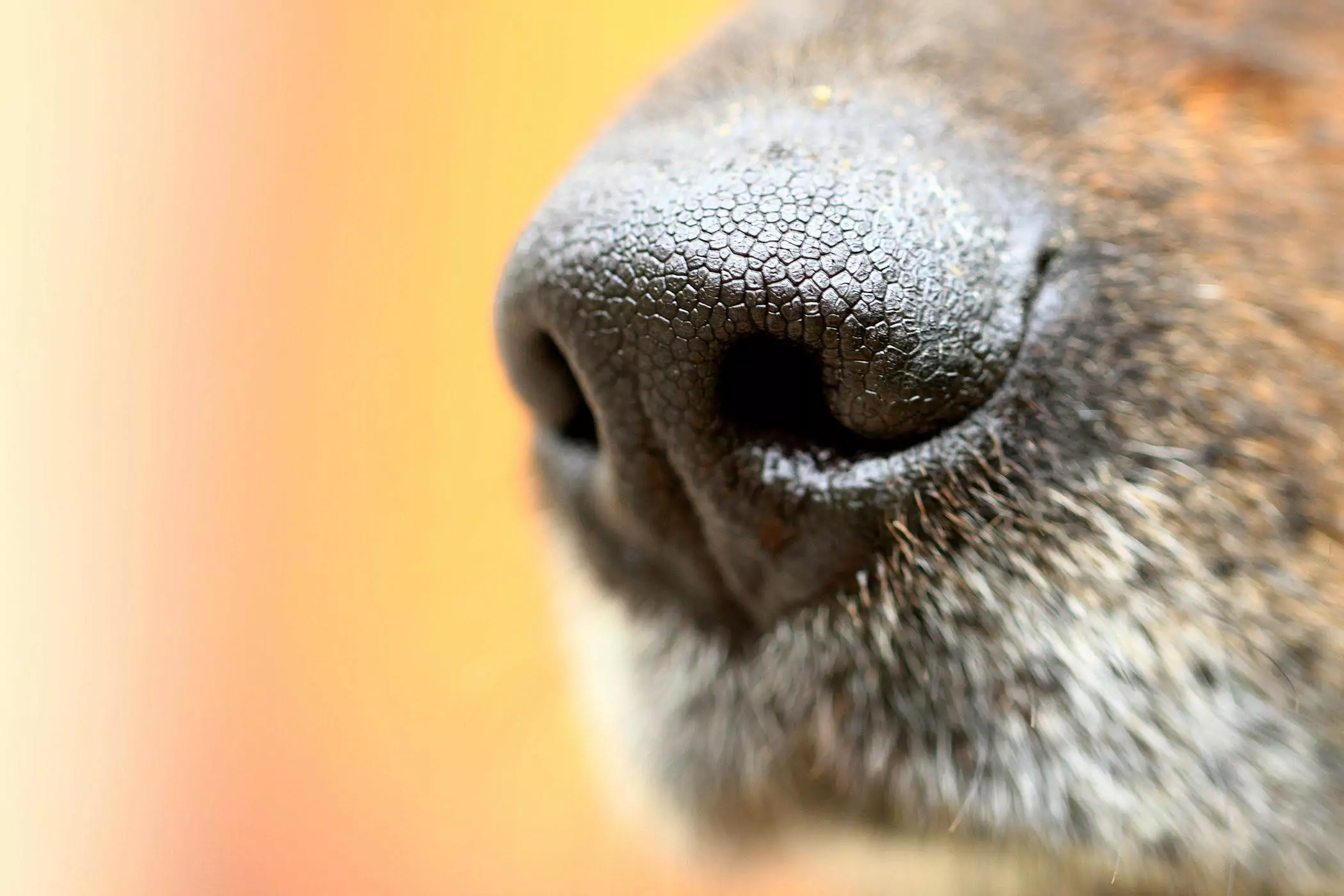Can dogs get the flu? What is how canine influenza can spread?
2022-07-08
Can dogs get the flu too? Yes, dog flu, also known as canine flu, is caused by a specific strain of the influenza virus, which can still be easily spread between pets. Although the symptoms of the pet flu are somewhat similar to those of the human flu, it is not a zoonotic disease and canine flu is only transmitted to pets, not to poopers. Importantly, although canine influenza only infects pets, it can be isolated or combined with other viruses to cause what is known as "kennel cough".
In most cases, canine flu is mild and dogs recover within a few weeks, but sometimes it can become more serious if other viral infections are involved.
The biggest fear of having a fur child is that it will develop a physical problem. Dogs that sneeze, cough a lot, or have runny noses can be much more troublesome than people. Dogs are more fragile than people, so a little problem in the body can not be ignored. If a dog has any of these symptoms, it may not just have a cold but may be infected with the canine flu virus. Let's take a look at what canine influenza is. What are the symptoms of dog illness and how can owners prevent their dogs from getting sick.
I. What is canine influenza?
Canine influenza is a highly contagious respiratory viral infection that is a contagious respiratory disease in dogs caused by a specific influenza A virus (H3N8). Canine influenza is a disease that is found among dogs and there have been no instances of infected dogs becoming infected. There are two known types of viruses, H3N2 and H3N8. These two types have only been outbreaks in Korea and Europe and the United States before, and the current epidemic is the influenza A virus of H3N8. In China, the prevalent influenza strain is the H3N2 subtype.
The H3N8 strain started as an equine influenza virus that was transmitted to dogs in 2004 when Florida was the first area to be infected. On the other hand, H3N2 originated in Asia, and scientists believe it was transmitted from birds to dogs.
II. Symptoms of canine influenza in dogs
Canine influenza symptoms are similar to kennel cough symptoms, and dogs infected with the canine influenza virus may develop two different syndromes.
Mild type. Dogs will cough for a long time, usually, a wet cough, and symptoms will last 10-30 days, possibly longer. During this time the dog will have anorexia, lethargy, fever, runny nose, and drooling.
Severe type. The dog may have a fever of more than 40 degrees. The canine influenza virus affects the capillaries in the dog's lungs and the dog may cough up blood and have difficulty breathing. There may also be secondary bacterial infections, including bacterial pneumonia, which can make the condition more severe.
Canine influenza is not seasonal and infection can occur year-round. Once a dog is infected, 80% of dogs will show visible symptoms, while the rest will show no visible symptoms. In addition to canine influenza, viruses such as distemper, parainfluenza, adenovirus type II, and bacteria such as Bordetella and Mycoplasma can cause sneezing and a runny nose in dogs. Therefore, owners should take their dogs to the hospital to check for pathogens so that the right medicine can be administered as early as possible.
The most similar symptoms of canine influenza to our cold are cough, runny nose, and fever. Pets can catch it through direct contact with a cold pet, from a cold pet's bowl or toy, or even from a healthy pet if you haven't washed your hands after touching a cold pet.
Anywhere there are multiple dogs, the risk of your pet having a cold is also increased, meaning that if you take your pet to the petting zoo or pet store or pet hospital often to play, the chances of it getting infected are much higher. Although pet stores or pet hospitals have their precautions to prevent the spread of infectious diseases such as pet flu or kennel cough, this does not mean that the pet is in a 100% safe environment.
Those with canine influenza exhibit more symptoms and some infected dogs may not develop any conditions, but canine influenza is still contagious. A small percentage of pets are more susceptible to canine flu and it may be accompanied by a high fever and even develop into pneumonia.

Three, what are how canine influenza can spread?
The canine influenza virus can be transmitted through the saliva and sputum of infected dogs, as well as objects they have touched directly or indirectly, such as toys, carpets, clothing, and air. Therefore, it is best for owners to keep their dogs away from dogs with runny noses and coughs, to take their dogs to the doctor promptly if they show signs of the flu, and disinfect their clothes and other household items.
Canine influenza is most often spread in places where dogs congregate, such as pet stores and dog parks, so owners should try not to take their dogs to areas where there is a high concentration of dogs during an outbreak. When returning home from an outing or coming into contact with another dog, owners should wash their hands and disinfect before touching their dog, as the flu virus can live on the human body for up to 30 minutes and can be transmitted to your dog through you.
IV. Diagnosis and treatment
If you think your pet has canine influenza, talk to a veterinarian who knows your pet's medical condition as soon as possible. Since canine influenza is highly contagious, then your vet may recommend hospitalizing your pet for a bit until you are sure your pet is doing a little better. If you have a multi-dog household, then prompt treatment is very important to prevent other pets from catching canine flu as well.
Do you know what the symptoms of canine influenza are, and how to prevent it?
When a pet enters the vet, the vet may perform a blood test or PCR test, which also includes a swab of the pet's mouth. These tests can help the vet identify the presence of canine influenza or the presence of other viruses. Some other viral infections may also cause similar symptoms, so the vet may also need to perform other tests, such as
Chemical tests to assess kidney, liver, and pancreas function and sugar levels
Electrolyte testing to ensure your pet is not dehydrated or has electrolyte disturbances
Complete blood count to screen your pet for infection, inflammation, anemia, and other blood-related disorders
Urinalysis to screen for urinary tract infections and other diseases and to assess the ability of the kidneys to concentrate urine
Screening tests to rule out certain infectious diseases
X-rays to examine the heart and lungs
Do you know what the symptoms of canine influenza are, and how to prevent it?
There is no one particular treatment for canine influenza. Just like human influenza, it relies on treatment and physical fitness, a process that can take a week or more. Most dogs with milder symptoms do not even require much treatment. Pets with more severe symptoms may require supportive treatment with fluids, supplemental feeding, or even antibiotics in the event of a secondary infection such as pneumonia.
V. Prevention
How can I prevent my pet from getting canine influenza? If you accidentally touch your pet with a respiratory illness, remember to wash your hands and change your clothes afterward, plus keep your pet's toys and bowls clean to maximize the source of infection.
If your pet already has canine influenza, it needs to be isolated from other pets in the house until the vet determines that it has fully recovered. There is also a vaccine that controls the spread of the virus and minimizes the impact on the infected dog, but this vaccine does not completely stop the transmission of the bacteria and does not guarantee that the dog will never get canine flu again.
Was this article helpful to you?
Other links in this article
Comments

Why is my dog throwing up?

Why does my dog keep coughing?

How many months is a dog pregnant? Signs and Phenomena of Dog Pregnancy

How do dogs grow fleas? Ways to get rid of fleas on dogs

Can dogs get diabetes?

Can dogs be depressed?

Why does my dog keep sneezing? Causes of Sneezing in Dogs

Can dogs catch a cold? Cold and Flu Symptoms in Dogs

What causes heart disease in dogs

Can dogs get urinary tract infections?







